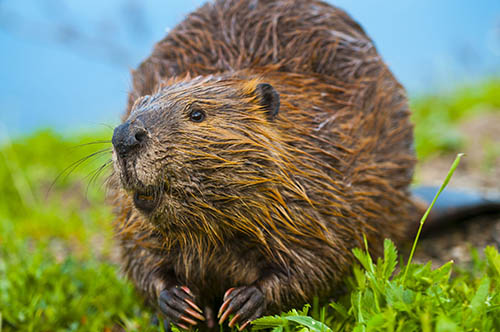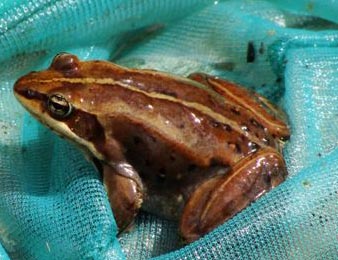The Survival of Winter and Predators
This blog was written by Nature Canada member, Steve Gahbauer.
Once again winter is upon us. For some of us it is a time for outdoor fun, frolicking in the snow and participating in, or watching, winter sports. For others it is the season of blah. And for a few, winter is just a challenge to survive. They are not alone. When it comes to survival, animals have developed some surprising skills and habits to avoid the cold and being eaten by predators. Here are some examples:
 Beavers
Beavers
To survive the long Canadian winters, beavers move beneath the snow among the lodges they have built and stocked with food. If food runs out, beavers take quick trips above ground, usually preferring the safety of overcast days, lest predators lurk nearby, says Michael Runtz, a naturalist in Ottawa.
Water Bugs
Nature lover Allan Britnell cites some more curious survival techniques in the winter issue of ON Nature magazine: female giant water bugs don’t bother with building a nest for their offspring. They simply lay their eggs on the wings of the male, who carries them around until they hatch. Thus, the eggs become a moving target, assuring a greater survival rate.
Swallowtails
Sometimes, just acting tough is enough to ward off predators. Throughout their four stages of development, Swallowtail butterflies employ a range of camouflaging techniques. To avoid being eaten, the caterpillars of immature Canadian Tiger Swallowtail butterflies resemble bird feces. As the caterpillars mature, they turn dark green and sprout two yellow and black spots that look like eyes. They even rear up when threatened, enhancing their snake-like appearance. The creature’s real secret weapon is the osmeterium, an appendage that resembles the forked tongue of a snake and emerges from the thorax of the insect when it detects a predator. If the potential predator still is not frightened off, the osmeterium releases a stinky chemical concoction.
Eastern Hog-nosed Snake
Another excellent faker is the Eastern Hog-nosed snake, a harmless species that is at risk in Canada. When threatened, this snake rears up and flattens its head in a manner similar to a cobra. If that survival technique does not scare off the attacker, the snake plays possum, curling up into a circle, belly up, with its tongue dangling out of its mouth.
 Wood Frogs
Wood Frogs
A curious case is the survival technique of the Wood Frog. Most amphibian species spend their winter in water or burrowed deep into the soil to insulate themselves from extremely cold temperatures. The Wood Frog, however, hibernates in the ground’s shallow organic layer, leaving itself vulnerable to freezing. This would spell death for most amphibians, but the Wood Frog can survive the freezing of 60 – 70% of the water in its body. Shallow hibernation serves this species well – and it offers another advantage: hibernating close to the soil’s surface gives Wood Frogs a head start on breeding when spring arrives. They feel warmer temperatures before deeper-buried amphibians and get down to business right away. Consequently, the species is often the first frog to be heard, seen and recorded in early spring.
American Robins
Birds also have specific survival techniques. We have noticed that more and more American Robins stay here in the winter, instead of migrating to the south. To survive they flock together in groups of up to 100 birds and search for food. When they find a resource-rich area, they stay and switch to eating mostly fruit, like crab apples, juniper berries and rose hips. Pigeons and other birds manage the cold by alternating feet and tucking one leg up under their belly.
Winter is more than survival. In this part of the world, we are all creatures of winter. Instead of complaining about the dark and cold of the season, we should celebrate snow and ice. By reflecting 80 – 90% of incoming sunlight back into the atmosphere, snow cover cools the Earth. Snow also insulates parts of the Earth’s surface, holding heat in and keeping moisture from evaporating. When snow melts, it fills rivers and lakes. Make the most of winter and unwind.
To see the full article, click here.



